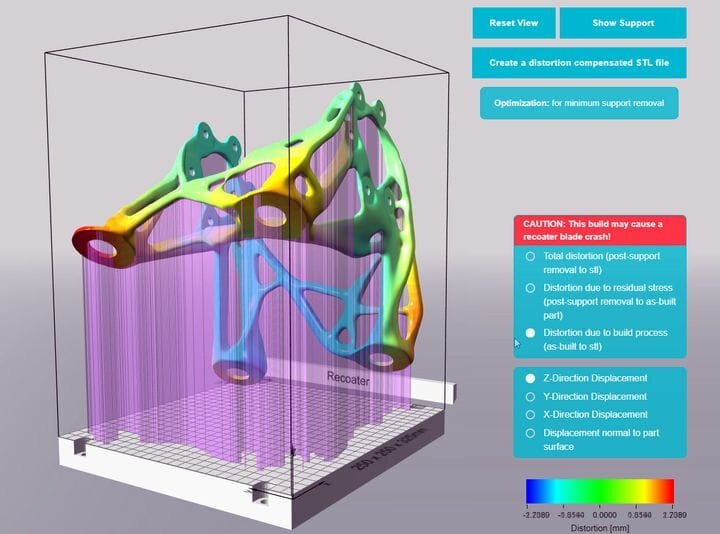![Atlas 3D’s Sunata simulation software is now part of Siemens [Source: Siemens]](https://fabbaloo.com/wp-content/uploads/2020/05/image-asset_img_5eb08cb6a703c.jpg)
Industrial giant Siemens acquired Atlas 3D to add to their growing additive manufacturing portfolio.
Somehow I missed this in the Formnext Frenzy, but on 12 November Siemens and Atlas 3D announced the Indiana-based startup was to be entirely acquired by Siemens.
Sunata Features
We’ve followed 3D Atlas for a few years now, and were impressed with their Sunata product. Sunata can perform a sophisticated simulation of a metal 3D print in order to understand the thermal distortions while 3D printing a specific geometry. Then, it can re-engineer the design slightly to account for the thermal stresses to ensure that the part is geometrically correct when printed.
In other words, if a warp is predicted, it will adjust the model to use the warp to bring the geometry in line. Such a tool is indispensable in the expensive world of metal 3D printing, where print failures – often due to thermal warping – are common.
Recently the company added GPU support to Sunata, greatly speeding up the simulation process. This effect is particularly noticeable on high resolution analyses, where we saw one Sunata benchmark show a 21X speed improvement.
Siemens says:
“Siemens announced today that it has signed an agreement to acquire Atlas 3D, Inc., a Plymouth, Indiana-based developer of software that works with direct metal laser sintering (DMLS) printers to automatically provide design engineers with the optimal print orientation and requisite support structures for additive parts in near real-time. Atlas 3D will join Siemens Digital Industries Software, where its solutions will expand additive manufacturing capabilities in the Xcelerator portfolio of software.”
And:
”Atlas 3D’s Sunata software solves this problem by giving front-end designers a quick, easy and automated way to get much closer to a “right first time” build. Sunata is a GPU-accelerated high-performance computing additive manufacturing software solution that can deliver results up to one hundred times faster than other build simulation solutions on the market.
GPU-accelerated computing is the employment of a graphics processing unit (GPU) along with a computer processing unit (CPU) to facilitate processing-intensive operations such as deep learning, analytics and engineering applications.”
Siemens – Atlas 3D Outcome
This is good news for Siemens, as it will add a very powerful capability to their broad suite of industrial software dedicated to 3D printing production environments. In particular, the cost savings incurred by Sunata will surely be most welcome by clients.
For Atlas 3D, a recent startup company, this could have been their exit strategy all along: build up a product and market, and then sell to a larger player. If that was their strategy, it is now complete, and the investors in Atlas3D are likely pretty happy right now.
For the small staff of Atlas 3D, it’s our understanding that many will continue to work with Siemens to develop the product. With Siemens’ huge customer reach they should be able to place the Sunata in far more installations than ever before.
Via PRNewsWire

